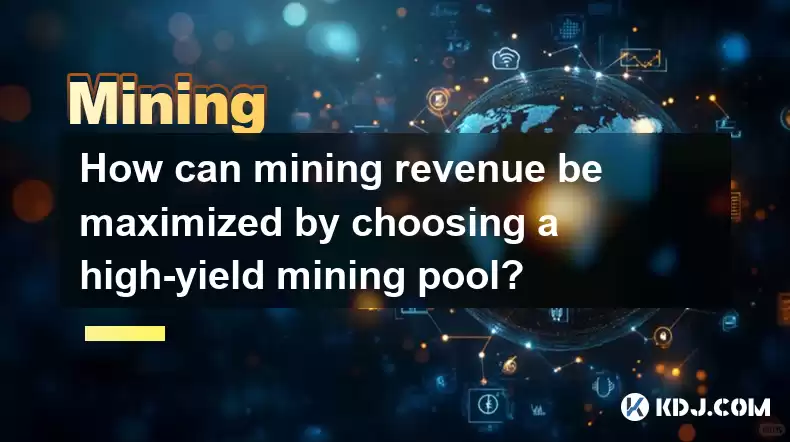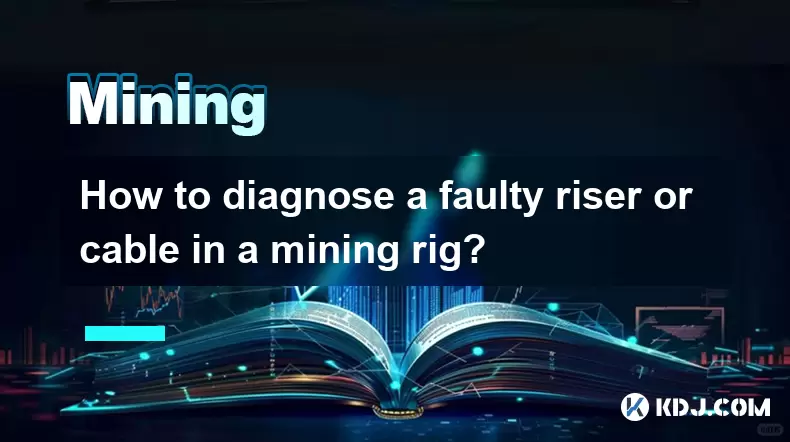-
 Bitcoin
Bitcoin $115100
1.27% -
 Ethereum
Ethereum $3675
2.71% -
 XRP
XRP $2.995
1.45% -
 Tether USDt
Tether USDt $1.000
0.02% -
 BNB
BNB $769.8
2.64% -
 Solana
Solana $168.0
3.25% -
 USDC
USDC $0.9999
-0.01% -
 TRON
TRON $0.3371
1.48% -
 Dogecoin
Dogecoin $0.2051
3.36% -
 Cardano
Cardano $0.7394
2.30% -
 Hyperliquid
Hyperliquid $38.15
0.42% -
 Stellar
Stellar $0.3966
-0.36% -
 Sui
Sui $3.486
2.93% -
 Chainlink
Chainlink $16.72
2.52% -
 Bitcoin Cash
Bitcoin Cash $568.0
4.36% -
 Hedera
Hedera $0.2440
2.59% -
 Ethena USDe
Ethena USDe $1.001
0.04% -
 Avalanche
Avalanche $22.16
2.06% -
 Litecoin
Litecoin $119.1
-0.73% -
 UNUS SED LEO
UNUS SED LEO $8.991
0.04% -
 Toncoin
Toncoin $3.232
-0.39% -
 Shiba Inu
Shiba Inu $0.00001233
2.82% -
 Uniswap
Uniswap $9.717
2.53% -
 Polkadot
Polkadot $3.664
1.85% -
 Dai
Dai $1.000
0.01% -
 Monero
Monero $281.2
-3.89% -
 Bitget Token
Bitget Token $4.350
1.55% -
 Cronos
Cronos $0.1428
5.07% -
 Pepe
Pepe $0.00001050
3.68% -
 Aave
Aave $262.3
3.54%
How can mining revenue be maximized by choosing a high-yield mining pool?
Maximize cryptocurrency mining revenue by selecting a high-yield pool; consider factors like low fees, reliable infrastructure, and a payout system aligning with your risk tolerance.
Mar 22, 2025 at 07:49 pm

How Can Mining Revenue Be Maximized by Choosing a High-Yield Mining Pool?
Choosing the right mining pool is crucial for maximizing your cryptocurrency mining revenue. A high-yield mining pool doesn't guarantee higher profits, but it significantly improves your chances. Factors like pool fees, payout systems, and the pool's overall hash rate influence your earnings. Understanding these factors is key to selecting a profitable pool.
Understanding Mining Pool Hashrate and its Impact on Revenue
A mining pool's hashrate represents its collective computational power. A larger hashrate increases the likelihood of finding a block and receiving a reward. Joining a pool with a high hashrate offers more frequent payouts, even though your individual contribution is smaller. This consistency can lead to more predictable income streams compared to solo mining. However, a larger pool also means your share of the block reward is proportionally smaller.
The Importance of Pool Fees in Maximizing Revenue
Pool fees directly impact your mining profits. Pools typically charge a percentage of your mined block rewards as a fee. These fees can range from 0% to several percent. A lower fee directly translates to higher net revenue. Carefully compare fee structures across different pools before making a decision. Consider the long-term implications of slightly higher fees if a pool offers other significant advantages.
Payout Systems and Their Influence on Mining Revenue
Different pools employ various payout systems. Some use a proportional system, distributing rewards based on your contribution to the pool's hashrate. Others might use a pay-per-share (PPS) system, guaranteeing payment for each share submitted, regardless of whether the pool finds a block. PPS offers more predictable income but might involve higher fees. Understanding these differences is crucial for choosing a system that aligns with your risk tolerance and financial goals.
Factors Beyond Hashrate: Server Infrastructure and Pool Stability
While a high hashrate is essential, reliable server infrastructure is equally vital. A stable pool with minimal downtime ensures uninterrupted mining and consistent payouts. Look for pools with robust servers and a history of reliable operation. Frequent downtime translates to lost mining opportunities and reduced revenue. Research the pool's reputation and user reviews to assess its stability and reliability.
Choosing the Right Algorithm for Your Mining Hardware
Different cryptocurrencies use different mining algorithms. Your mining hardware's efficiency varies depending on the algorithm. Select a pool that supports the algorithm optimized for your hardware. Mining an inefficient algorithm will significantly reduce your profitability, regardless of the pool's hashrate or fees. Understanding your hardware's capabilities is crucial for maximizing your returns.
Strategies for Optimizing Your Mining Revenue Within a Chosen Pool
Even after choosing a high-yield pool, several strategies can further optimize your revenue. Regularly monitor your mining performance, including your hashrate and rejected shares. High rejection rates indicate potential hardware or software issues that need attention. Adjusting your mining settings or upgrading your hardware can improve efficiency. Staying informed about updates and changes within the pool is also beneficial.
Step-by-Step Guide to Choosing a High-Yield Mining Pool:
- Research potential pools: Explore various pools, comparing their hashrates, fees, payout systems, and server infrastructure.
- Assess pool fees: Compare fee structures across different pools. Look for pools with low fees without compromising on other essential factors.
- Analyze payout systems: Choose a payout system that aligns with your risk tolerance and financial goals (PPS, proportional, etc.).
- Check server stability and uptime: Look for pools with a history of reliable operation and minimal downtime. Read reviews and check their reputation.
- Verify algorithm compatibility: Ensure the pool supports the algorithm optimized for your mining hardware.
- Monitor your performance: Regularly check your hashrate, rejected shares, and overall profitability. Address any issues promptly.
Frequently Asked Questions:
Q: What is a mining pool?
A: A mining pool is a group of miners who combine their computing power to increase their chances of solving cryptographic puzzles and earning block rewards.
Q: How do pool fees impact my revenue?
A: Pool fees are a percentage of your mining rewards that the pool takes as compensation for its services. Lower fees mean higher net profits.
Q: What are the different payout systems?
A: Common payout systems include PPS (pay-per-share), proportional, and PPLNS (pay-per-last-N-shares). Each has different risk and reward profiles.
Q: How important is pool hashrate?
A: A higher pool hashrate increases the frequency of block rewards, leading to more consistent income. However, your share of the reward is proportionally smaller.
Q: How can I maximize my mining revenue beyond pool selection?
A: Optimize your mining hardware, monitor your performance for issues, and stay updated on pool changes and potential upgrades.
Q: What are the risks of joining a low-quality mining pool?
A: Risks include higher fees, frequent downtime, potential scams, and unreliable payouts. Thorough research is crucial.
Q: Are there pools with zero fees?
A: While some pools advertise low or zero fees, it's crucial to examine their other characteristics. Extremely low fees might indicate other drawbacks, such as unstable infrastructure or questionable practices.
Q: How do I know if a mining pool is legitimate?
A: Research the pool's reputation, check for user reviews, and verify its history and stability. Be wary of pools promising unrealistically high returns.
Q: What should I do if my mining pool experiences downtime?
A: Contact the pool's support team to inquire about the issue and potential compensation for lost mining opportunities. Consider switching pools if downtime is frequent or prolonged.
Q: Can I switch mining pools easily?
A: Yes, you can generally switch mining pools relatively easily. You'll need to update your mining software with the new pool's details. However, there might be a brief period of downtime during the transition.
Disclaimer:info@kdj.com
The information provided is not trading advice. kdj.com does not assume any responsibility for any investments made based on the information provided in this article. Cryptocurrencies are highly volatile and it is highly recommended that you invest with caution after thorough research!
If you believe that the content used on this website infringes your copyright, please contact us immediately (info@kdj.com) and we will delete it promptly.
- BlockDAG, Litecoin, and Cardano: Charting the Course in Crypto's Dynamic Waters
- 2025-08-07 09:09:06
- Fireverse Token: Igniting a Musical Revolution in Web3
- 2025-08-07 08:27:45
- Ethereum, L2 Withdrawals, and Decentralization: A New Yorker's Take
- 2025-08-07 08:32:33
- Avalanche vs. Ruvi AI: Daily Sales Tell a Story of Crypto Disruption
- 2025-08-07 06:29:35
- DeSoc: The Crypto to Buy Now for a Decentralized Future (and Maybe 43x Gains!)
- 2025-08-07 06:50:16
- Arctic Pablo Coin: Riding the Meme Coin Wave with a Deflationary Twist
- 2025-08-07 07:18:13
Related knowledge

What is "proof-of-work" and how does it relate to mining?
Aug 07,2025 at 02:03pm
Understanding the Concept of Proof-of-WorkProof-of-work (PoW) is a consensus mechanism used in blockchain networks to validate transactions and secure...

What are the differences between mining on Windows vs. Linux?
Aug 06,2025 at 11:29pm
Overview of Cryptocurrency Mining PlatformsCryptocurrency mining involves using computational power to solve complex cryptographic puzzles and validat...

How to use an old computer for cryptocurrency mining?
Aug 07,2025 at 12:42pm
Understanding the Feasibility of Using an Old Computer for MiningUsing an old computer for cryptocurrency mining may seem outdated, but it is still te...

Can you mine cryptocurrency using solar power?
Aug 07,2025 at 12:00am
Understanding the Basics of Cryptocurrency MiningCryptocurrency mining involves validating transactions on a blockchain network by solving complex cry...

How to build a mining rig inside a PC case?
Aug 06,2025 at 11:01pm
Understanding the Basics of a Mining Rig in a PC CaseBuilding a mining rig inside a PC case involves transforming a standard computer chassis into a d...

How to diagnose a faulty riser or cable in a mining rig?
Aug 07,2025 at 01:49am
Understanding the Role of Riser Cables in Mining RigsIn a cryptocurrency mining rig, riser cables serve as the bridge between the motherboard and the ...

What is "proof-of-work" and how does it relate to mining?
Aug 07,2025 at 02:03pm
Understanding the Concept of Proof-of-WorkProof-of-work (PoW) is a consensus mechanism used in blockchain networks to validate transactions and secure...

What are the differences between mining on Windows vs. Linux?
Aug 06,2025 at 11:29pm
Overview of Cryptocurrency Mining PlatformsCryptocurrency mining involves using computational power to solve complex cryptographic puzzles and validat...

How to use an old computer for cryptocurrency mining?
Aug 07,2025 at 12:42pm
Understanding the Feasibility of Using an Old Computer for MiningUsing an old computer for cryptocurrency mining may seem outdated, but it is still te...

Can you mine cryptocurrency using solar power?
Aug 07,2025 at 12:00am
Understanding the Basics of Cryptocurrency MiningCryptocurrency mining involves validating transactions on a blockchain network by solving complex cry...

How to build a mining rig inside a PC case?
Aug 06,2025 at 11:01pm
Understanding the Basics of a Mining Rig in a PC CaseBuilding a mining rig inside a PC case involves transforming a standard computer chassis into a d...

How to diagnose a faulty riser or cable in a mining rig?
Aug 07,2025 at 01:49am
Understanding the Role of Riser Cables in Mining RigsIn a cryptocurrency mining rig, riser cables serve as the bridge between the motherboard and the ...
See all articles

























































































